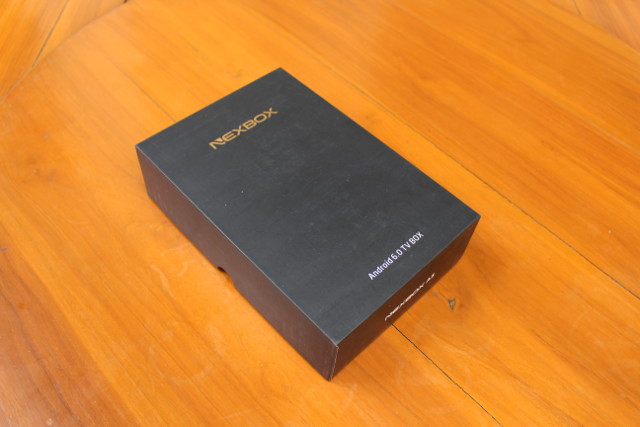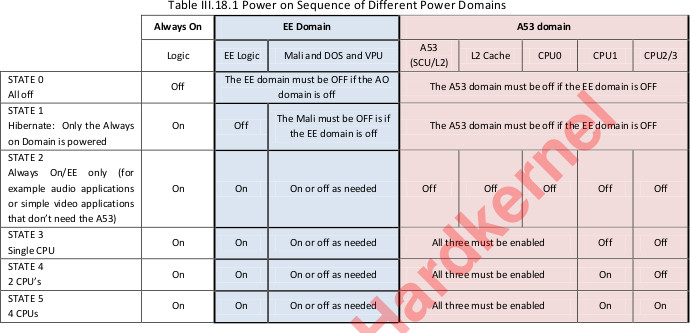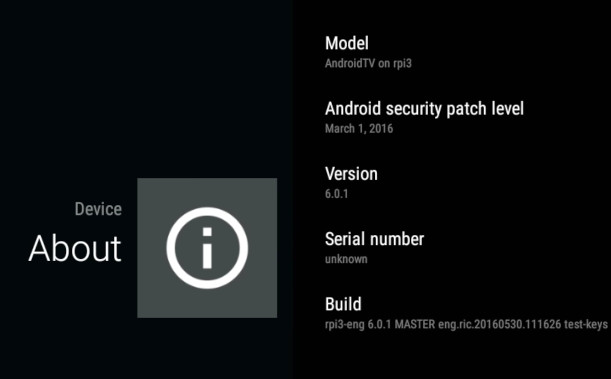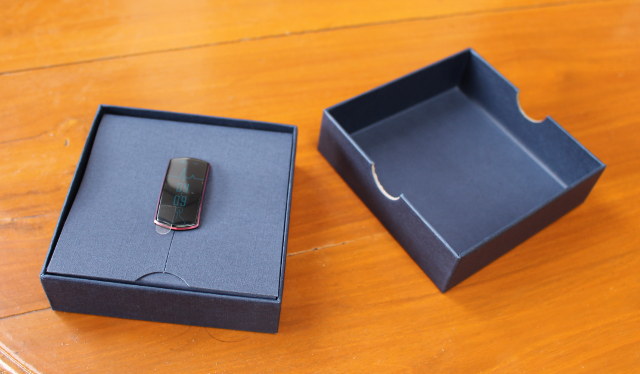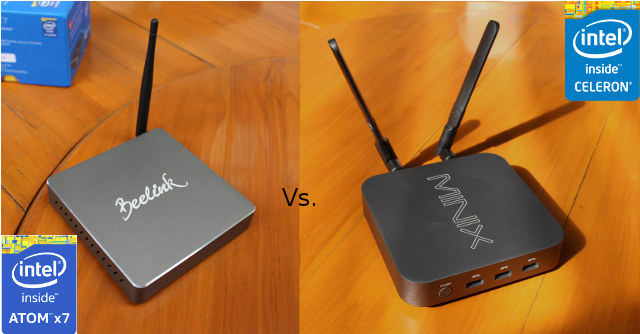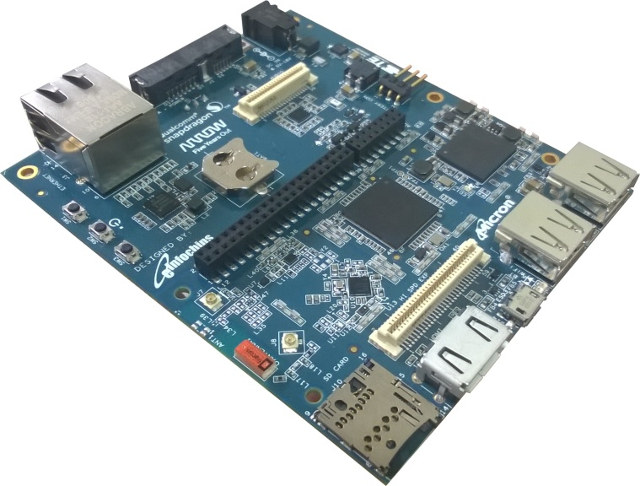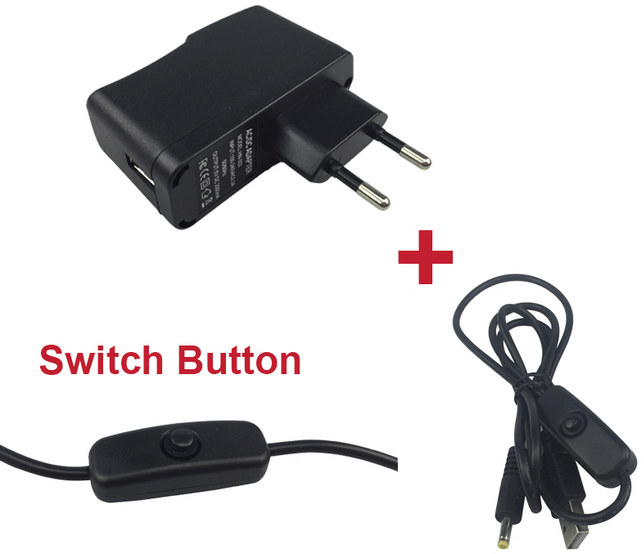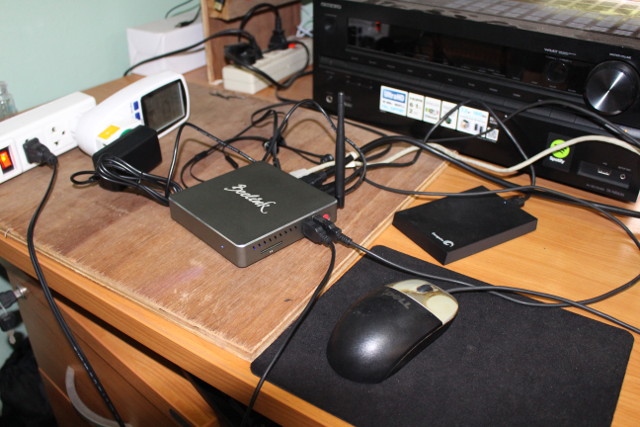NEXBOX A5 is one of the first Android 6.0 TV boxes based on Amlogic S905X processor capable of 4K H.265, H2.64 and VP9 video decoding. The company sent a sample for review, and I’ll start by taking pictures of the device and board in the first part of the review, before fully testing its performance and features in the second part.NEXBOX A5 Unboxing I got the device in a black package with NEXBOX logo, and “Android 6.0 TV Box” text. I received the TV box with the default cofiguration (2GB RAM / 16GB flash), but they also have a cheaper model with 1GB and 8GB flash. Some of the new feature brought by this device has shown on the bottom of the package such as VP9, Android 6.0 and HDR (High Dynamic Range) support. I don’t think I’ll be able to test the latter, since my TV does not support […]
Hardkernel Releases Amlogic S905 Datasheet
When you design a board and/or write drivers for an SoC it helps a lot to get info about electrical characteristics, memory map, registers’ addresses and values to understand how the hardware works, especially for custom applications, but many silicon vendors only distribute such documents under NDA to their business customers, with exception from companies such as Freescale (now NXP), and Texas Instruments. Hardkernel, the company developing ODROID boards, is also trying to release as much documentation as possible for their board such as Amlogic S805 datasheet for ODROID-C1/C1+ boards, and the Korean company has now released Amlogic S905 processor datasheet as the processor is used in their ODROID-C2 board. Some of the information available in the datasheet include Memory map Power domain CPU and GPU sub-system Clock & Reset Unit System Boot General Purpose Input/Output (GPIO) Interrupt Controller Direct Memory Access Controller (DMAC) Timers Crypto Etc… ODROID-C2 was launched […]
Android TV 6.0 Ported to Raspberry Pi 3 with 2D/3D GPU Acceleration, but no Hardware Video Decoding (Yet)
Google might be working on Android or Brillo for Raspberry Pi 3, with a new repository created in AOSP, meaning that, if that’s Android, you won’t probably get the Google Mobiles Services by default, but those can be side-loaded to get access the the Play Store, Youtube, etc… In the meantime, a group of developer have been working Android 6.0 TV port for Raspberry Pi 3. That’s the same team who worked on previous images for Raspberry Pi and Raspberry Pi 2 boards using “peyo” port, and that did not have any support for 2D/3D graphics acceleration, nor hardware video decoding. But they’ve made some improvements for their Android TV 6.0.1 release for Raspberry Pi 3, as 2D/3D GPU acceleration is enabled using the Mesa drivers, and Kodi user interface, game emulators, WelGL in Chrome browser all work relatively well using 1280×720 frame buffer resolution as you can see from […]
Energympro EP-SH09 Bluetooth LE Fitness Tracker Features AMS AS7000 Biosensor
I wrote about AMS AS7000 biosensor designed for heart rate monitors last fall, and one of my regular reader noticed the sensor, made his company evaluate it, and since the results were pretty good, designed a product with it. And here I am with a sample of Energympro EP-SH09 fitness tracker with an OLED display, HRM based on AS7000 sensor, and IP67 ingress protection rating. Some of Energympro EP-SH09 technical specifications: MCU – Texas Instruments CC2640 ARM Cortex-M3 48 MHz Display – 0.86″ OLED display, 96×32 resolution Connectivity – Bluetooth 4.0 LE Input – Touch area at the bottom of the display Sensors – AMS AS7000 biosensor for HRM, motion sensors Battery – 45 mAh LiPo battery which looks good for 4 to 5 days. Dimensions – 40 x 18 x 12.9 mm Weight – 6 grams Ingress Protection Rating – IP67 The device can pair with smartphone using Smart […]
Intel Atom x7-Z8700 (Cherry Trail) vs Intel Celeron N3150 (Braswell) Benchmarks Comparison
Intel tend to release lots of processors, and it’s not also clear how they perform against each others, but generally the rank from slowest to highest goes something like Atom < Celeron < Pentium < Core M < Core i3 < Core i5 < Core i7. Recently, I’ve seen and reviewed a few low power Intel Atom x7-Z8700 “Cherry Trail” and Intel Celeron N3150 “Braswell” mini PCs, both quad core processors @ 1.6 GHz (base), and I could not find much differences between the two during use. So to have a clear and objective view of the relative performance of the two processors, I’ve compared the results I got with Intel Atom x7-Z8700 based Beelink BT7 mini PC to the ones I got with MINIX NGC-1 mini PC powered by Celeron N3150 processor in the table below. Both machines have been designed quite well (good heat dissipation) and with storage […]
SD 600eval Development Board Compliant with 96Boards CE Extended To Sell for $279
Last month, we found out that Arrows Electronics was working on DragonBoard 600c development board featuring Qualcomm Snapragon 600 processor and based on 96Boards CE Extended version which allows for extra features such as SATA and Ethernet ports. At the time, the complete specifications were not available, and neither pricing. We do now have more details, as the board designed by Elinfochips is (also) called SD 600eval, and is available on back order for $279. SD 600eval specifications: SoC- Qualcomm Snapdragon 600 (APQ8064) quad-core Krait 300 processor @ up to 1.7 GHz with Adreno 320 GPU @ 400MHz supporting OpenGL ES 1.1/2.0, OpenCL 1.1, WebGL 1.0, and DirectX 9.3 System Memory – 2GB PoP LPDDR2 @ 533 MHz Storage – 16GB eMMC Flash + micro SD 3.0 (UHS-1) slot + SATA port Video Output – HDMI up to 1080p Video – 1080p@30fps HD video playback and capture (h.264/AVC) Connectivity – […]
On/Off Switch USB Cables & Power Adapters for Development Boards
Many development boards don’t have a power switch, and simply boot when you apply power. So if you need to turn off and turn on your board, you’d either remove the power cable and re-insert it, or do the same with the power adapter on the power strip or socket, but the latter is not always convenient, and the former may damage the power connector, especially if the board uses a fragile micro USB connector for power. The solution to this small problem is to use a USB cable with an on/off switch. The example above is a 5V/2A with a switch button with the plug working with Orange Pi, Banana Pi M2, and other board using a 4mm jack (like PS4) for power. That model sells for $3.90 on Aliexpress. Another solution is instead to buy a short USB cable with an on/off switch instead for just around $1 […]
Beelink BT7 Review – Windows 10 mini PC Based on Intel Atom x7-Z8700 Processor
Beelink BT7 mini PC powered by Intel Atom x7-Z8700 processor offers an interesting alternative to the fanless Voyo V3 mini PC, as it is actively cooled by a small fan, supports (Gigabit) Ethernet, and comes with three full USB 3.0 ports. There are three versions with either 64, 128 (64+64) or 320 (64+256) GB stortage, and I got Beelink BT7 128GB to play with. Since I’ve already checkout the hardware, I’ll focus on the performance and stability of the device on Windows 10 in the second part of the review. Setup and System Information I placed the mini PC on my desk, made use of the three USB 3.0 ports with a USB keyboard, a USB mouse, and a Seagate USB 3.0 hard drive, and connected Ethernet, HDMI and the power cable. However, if you happen to own a TV or monitor that supports VESA mounts, you can use the […]


